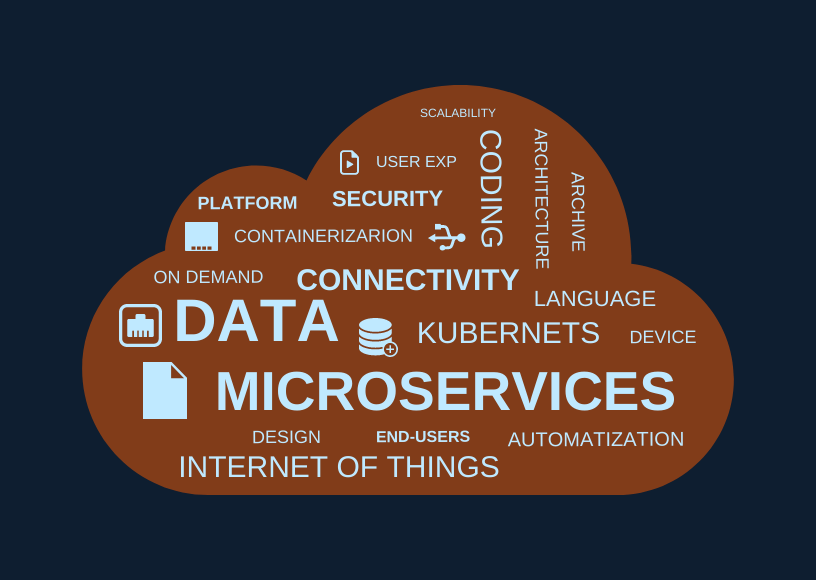
Innovation is key to the success of any business. To stay ahead of the competition, you need to come up with new and innovative ways to solve problems. And that’s where cloud-native architecture comes in. Cloud-native architecture is a more contemporary way of thinking about IT infrastructure that takes advantage of the cloud.
It allows businesses to be more agile and respond quickly to changing customer needs. With more and more companies searching for cloud-based products and microservices, developers need creative ideas for integrating systems and guiding enterprises on their journey to the cloud.
This article will discuss cloud-native architecture, why companies need it, and how having expert partners such as Lobra can help them achieve their goals.
Cloud-Native: What You Need To Know
Cloud-native refers to applications and services designed to take advantage of the cloud computing model. In a traditional data center, applications need to be rewritten to use virtual machines or other abstractions of resources. However, with cloud-native, you can write your application once and have it run anywhere — public, private, or hybrid clouds.
Cloud-native is not just about bringing an application to the cloud. It’s about taking full advantage of the characteristics of the cloud, such as on-demand scaling, elasticity, pay-as-you-go pricing, and global reach. Cloud-native applications use modern architectures and frameworks such as microservices and containers. They are scalable, fault-tolerant, and easy to manage.
There are many reasons why companies need cloud-native solutions. The list below shows their benefits:
Increased agility – Companies need to quickly adapt to changes in the market, which requires a fast, flexible IT infrastructure. The cloud provides that agility through its on-demand scalability and elasticity.
Lower costs – Companies can often run cloud-based applications at a fraction of the cost of traditional data center hosted applications. It is due to the pay-as-you-go pricing model of the public cloud and increased efficiencies from running workloads in the cloud.
A better time to market – Companies can deploy cloud-native applications faster than traditional ones. This is because they are easier to manage and don’t require much time for setup and configuration.
Global reach – A cloud-native infrastructure can scale to any size and can be deployed anywhere in the world. It allows companies to serve their customers no matter where they are located.
Cloud-Based vs. Cloud-Native
There’s a lot of confusion about the terms “cloud-based” and “cloud-native.” A cloud-based application is an application that runs in the cloud (public or private). It could be written using any technology stack — from legacy software such as COBOL on mainframes up through modern microservice frameworks running inside containers on Kubernetes clusters.
In other words, there is no difference between a traditional data center-hosted app versus one running within the public cloud. On the other hand, a cloud-native application is specifically designed to take advantage of the features and benefits of the cloud.
It may be running in a public, private, or hybrid cloud. Still, it’s not just moved there — it’s been re-architected to take advantage of the elasticity, scalability, and on-demand provisioning.
Cloud-Native Applications
Many different cloud-native applications include web applications, mobile apps, big data analytics, IoT applications, and more. In general, cloud-native applications are distributed and scalable. They use modern architectures such as microservices and containers, and they’re built to be fault-tolerant and easy to manage.

All the cloud-native applications share some common characteristics:
- They are written using modern architectures and frameworks such as microservices and containers
- They are scalable and fault-tolerant
- They are easy to manage and update
- They take advantage of the features and benefits of the cloud
Why Do Companies Need Cloud-Native Solutions?
Businesses can find benefits aplenty in starting a process of cloud-native digitalization, and this applies to a multitude of industries and services. In fact, cloud-native companies are among some of the fastest-growing software businesses.
If you want to avoid lagging behind in an era of rapid digitalization, here are some of the main advantages that the cloud can bring to your businesses:
Microservices
Microservices is a software architecture pattern where an application is composed of many small, independent services. Each service does one thing well and communicates with other services using standard protocols such as REST or JSON.
This type of architecture makes it easy to scale an application up or down by adding or removing services as needed. It also makes it easier to update individual services without affecting the rest of the system.
Containerization
Containers are a way of packaging applications and dependencies to run anywhere — on a laptop, in a data center, or in the cloud. Containers are very lightweight and fast to start up, making them ideal for cloud-native applications. They’re also portable so that you can move them from one cloud environment to another with ease.
Kubernetes
Kubernetes is an open-source container orchestration platform that helps you efficiently manage large containers. Kubernetes provides APIs for managing clusters, deploying applications, and scaling services. It’s widely used by enterprises and public cloud providers such as Amazon Web Services (AWS) and Microsoft Azure.
Security

Cloud-native applications are designed to be secure from the ground up. Security is a top priority for companies, and cloud-native applications provide many features that help keep data safe, including:
Isolation of services – Each service runs in its container, which helps prevent one service from affecting another.
Least privilege – Services only have access to the resources they need to do their job.
Centralized logging and monitoring – All activity within the system can be monitored and audited.
Security automation – Many security tasks can be automated, such as intrusion detection and vulnerability scanning.
Cloud-native solutions offer many benefits when it comes to security. For starters, they take advantage of the security features built into modern cloud platforms such as Amazon Web Services (AWS) and Microsoft Azure. These features include identity management, access control lists (ACLs), encryption at rest, encryption in transit, and more.
Automatization
Automation reduces costs by allowing companies to do more with fewer resources while increasing productivity through faster deployment times and fewer errors due to human error. It makes it easier for companies to manage their IT infrastructure without hiring additional staff members or training existing employees on new technologies. Cloud-native solutions can also be automated using tools like Ansible or Puppet.
On-Demand Infrastructure
The ability to provide on-demand infrastructure is another significant benefit of cloud-native solutions. Companies no longer have to worry about capacity planning or over-provisioning their IT infrastructure when using cloud services like AWS EC, Azure VM Scale Sets, and Google Compute Engine Autoscaling.
Instead, they can focus on building applications that meet customer needs without worrying whether there will be enough servers for everyone to use at once.
Better Customer Experience
The result is a better customer experience because customers never have to wait for pages to load slowly due to server overloads or downtime caused by an overloaded database server running out of memory and crashing during peak traffic periods.
It allows companies who use these solutions to provide the best possible user experiences while saving money in the long run because they don’t need as much hardware on hand just in case something goes wrong with one of their applications.
The Role of Innovation
Cloud-native solutions require innovation to be successful. The cloud is a constantly changing environment, and companies need to adapt quickly to stay competitive. Additionally, the microservices architecture can present unique challenges to solve with creative solutions.

DevOps and cloud-based architectures are also constantly evolving, so businesses need to be willing to experiment and find new ways of working if they want to take advantage of the benefits of cloud-native.
The bottom line is that businesses need to embrace innovation if they want to make the most of cloud-native technologies. It means being open-minded about change and ready to try new things even if they seem risky.
However, with the right approach, the potential rewards for businesses are great. So don’t be afraid to experiment and see what the cloud-native world has to offer.
Why Cloud-Native Needs Creative Solutions
Not all companies have the exact same needs when it comes to IT infrastructure. What works for one company might not work for another. That’s why cloud-native solutions need creative problem-solving to meet the specific needs of each organization and allow them to take full advantage of the cloud.
DevOps and Cloud Architecture
DevOps is a methodology that combines development, operations, and quality assurance into one cohesive team. It allows companies to move faster and be more responsive to customer needs by breaking down the traditional barriers between these three groups.
Cloud architecture is the set of principles and practices that guide the design of applications for the Cloud. When combined, DevOps and cloud architecture can help companies build better applications more quickly and efficiently.
Is Cloud-Native architecture the Future?
The answer to this question is yes, but not everyone will agree on this point. Some people feel that using cloud-native solutions means giving control over their IT infrastructure to someone else. While this may be true in some cases, it is not necessarily a bad thing.
There isn’t enough time or money available for most companies today to build everything from scratch. With cloud-native solutions, you can get the benefits of using third-party vendors without sacrificing control over your IT infrastructure and applications.
It allows organizations to focus on what they do best while still gaining access to new technologies that might otherwise be out of reach due to cost constraints or other factors such as lack of expertise internally within their organization.




